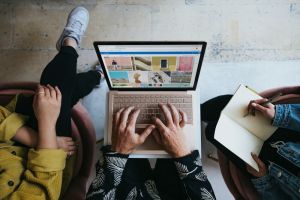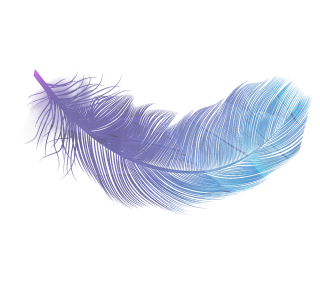
You’re stuck at work, diligently focused on your spreadsheet for the last three hours and you realize it’s been half a day since you had anything to drink. Getting up to hydrate yourself, a sharp stab of pain nails you in the center of your low back, thrusting you forward to grab your desk so you don’t keel over. You meant to go to that class they were offering to learn how to relieve lower back pain last month. But you were busy.Â
Been there?Â
It sucks, doesn’t it?Â
A thought like, OMG what if I have a tumor, goes through your mind.Â
Learning how to relieve lower back pain is annoying in the least when the pain can be crippling at its worst. Either way your immediate goal is learning how to relieve your lower back pain so you can get on with your life. Great news! You can catch a small problem and keep it from becoming a big one in most cases with easy treatments and exercises done at home.Â
And don’t worry, if you have low back pain you’re not the only one.Â
The truth about relieving lower back pain
If you’ve had some kind of low back pain during your lifetime, you’re not alone. Around 80% of Americans will experience back pain in their lives. And we spend at least $50 billion annually to treat it.Â
Back pain is one of the most common reasons people go to the doctor, and it’s one of the biggest causes for time taken off work.Â
And since back surgery is likely to backfire according to this source, it’s important to understand how to get to the bottom of it conservatively.
Hey, don’t freak out about things like surgery just yet. Make sure you know when to see your doctor and when to be confident about treating your low back pain on your own.Â
Red flags (when to get help)
When you’re experiencing signs and symptoms of something more serious you need to know ASAP and get your butt to the doctor. When in doubt, call the doc. Trust your instincts. Is your gut telling you something’s wrong? Listen and call your doc. Learning how to relieve lower back pain on your own might not matter if there’s something more sinister at play.Â
Ask yourself these questions to make it more clear when you should make that call:
Do you have severe or shooting pain or numbness and/or tingling in your back, pelvis or down your leg? Call the doc.
Are you having trouble with your bowel or bladder? Call the doc.Â
Is the pain persisting no matter what position you’re in and/or all through the night? Call your doc.Â
Does your leg feel dead, weak or heavy, or are you experiencing an inability to control your foot/ankle movement, especially when you walk or stand? Call your doc.Â
Causes of Low Back Pain
 The causes of low back pain are many, some scarier than others. Having your pain professionally diagnosed by a physician or physical therapist is the best and fastest way to get to the bottom of it. When low back pain is minor, caused by a slight sprain or strain and more annoying than severe, you can take a crack at guessing why you have it and find ways to treat it on your own. Minor causes include a sedentary lifestyle, a desk job, lack of exercise, poor sleep or eating habits, poor or repetitive postures all day, or a minor sprain or strain due to exercise or injury. Now that you’re understanding the causes of low back pain, how about a quick anatomy lesson so you can understand what parts of you are being affected when pain is present.
The causes of low back pain are many, some scarier than others. Having your pain professionally diagnosed by a physician or physical therapist is the best and fastest way to get to the bottom of it. When low back pain is minor, caused by a slight sprain or strain and more annoying than severe, you can take a crack at guessing why you have it and find ways to treat it on your own. Minor causes include a sedentary lifestyle, a desk job, lack of exercise, poor sleep or eating habits, poor or repetitive postures all day, or a minor sprain or strain due to exercise or injury. Now that you’re understanding the causes of low back pain, how about a quick anatomy lesson so you can understand what parts of you are being affected when pain is present.
Important anatomy
The spine sports thirty-three bones or vertebra. Between each vertebra is a disc. The discs are your shock absorbers. Â
Natural curves (the ones you want) exist at the neck, upper back and lower back. The vertebra have attachments for many different muscles including back, torso, diaphragm, hip and shoulder muscles. In other words, everything’s connected, like they told you.Â
The fascia is a connective tissue inside the body that makes up, surrounds and supports every single structure you have. The muscles, bones, nerves and organs are all housed by, and function properly because of, the fascial system. The fascia is important.Â
It’s important to understand that restrictions in the myofascial system can cause severe tightness, pressure, and pain. And because the fascia is invisible on regular X-rays and MRI’s, it’s normal for doctors to tell you there’s nothing wrong when the fascial system is at fault.Â
When the muscular or myofascial system is restricted, you have great options for relief. And later we’ll discuss what to do for longer-lasting healing and prevention.Â
How to relieve your low back pain fast

Photo by Thomas Kinto on Unsplash
Ice or heat?
New research says icing, a longtime favorite for quick relief of back pain, might be counterproductive and actually delay healing. Read that research here.Â
Use heat for fifteen to twenty minutes, or a take a hot bath to get fast relief from a minor sprain or strain. The idea is to relax the muscles and increase blood flow to speed up healing.
Deep breathingÂ
When you’re in pain you tend to contract, tense or clench around the pain and that only makes it worse. Make sure you engage in some slow, deep, easy breaths, which will help relieve the extra tension you’re adding by contracting.Â
The other benefits of deep breathing are:
Maximization of your breathing capacity
Greater amounts of oxygen are delivered to your body more quickly (aids in healing)
It helps calm you down and control stress
Stimulation of your lungs and lymphatic system which aid in healing
More about breathwork a bit later.Â
Over-the-counter pain relievers
If you’re not sure what’s best in terms of pain relievers, it’s important to check with your doc about over-the-counter versions. Anti-inflammatories like Advil, and acetaminophen (Tylenol) are the go-tos for most people for quick relief. If your pain lasts longer than ten days on these medications, time to call your doc.Â
Release endorphins
Endorphins (a hormone in the body) rival pain medication when it comes to relief. Some ways to help your body release its natural endorphins are:
~Eating certain foods (chocolate, vanilla, ginseng and hot peppers will all help release endorphins)
~Laugh, smile, and love more
~Do any kind of exercise
Read more about that here.Â
Products you can rub on
Products like BenGay, or BioFreeze can help temporarily reduce pain topically. You can also find natural remedies like Arnica or T-Relief that may help reduce pain and/or inflammation.Â
TENS Unit
A transcutaneous electrical nerve stimulation unit is often given to people by their doctor or physical therapist to temporarily reduce back pain. Read more about how these non-invasive, portable units work to block pain signals to the brain here.Â
Best natural home treatments, exercises and prevention

Photo by Thomas Kinto on Unsplash
Treating low back pain at home – Meditation, Breathwork and Posture
Meditation/Relaxation
Studies have proven that meditation and relaxation exercises will help you reduce your pain. So what are you waiting for? Learning how to relieve lower back pain has never been easier these days. Find an app, put your headphones in and bask in the peace of meditation. The Calm app is a great one to start with.Â
Breathwork
My friend and expert breath-worker will tell you that improved healing happens when we connect to a deeper breath. More oxygen means more nutrients and better, faster healing. Deep breathing also reduces inflammation and releases endorphins. There are many kinds of therapeutic breathwork to dabble with. I’m most fond of Transformational Breathwork.Â
Self-Myofascial Release
Myofascial release is one of the most effective treatments there is for pain relief. With a combination of pressure and stretch using your hands, stretch positions, or a ball or roller, you can perform releases on your body and release restrictions, and reduce inflammation, pain, and tightness.Â
Posture and ergonomics for relief and prevention

Photo by Clarisa Guerra on Unsplash
“Sit up straight!†“If you’re not careful, your face will stick that way!†Remember those threats from Mom? Sorry, but she was right. Repetitively poor or slumped posture puts undue and damaging strain on your bones, joints and muscles. It even makes it harder to breathe.Â
And the sticking-that-way thing? If you spend enough time in one bent posture, yes, the myofascial system (connective tissue) in your body will dehydrate and get stuck, creating tightness and sometimes pain. Refer to the anatomy section again if you need to.Â
There are some great ways to prevent this though. And learning to relieve lower back pain is a lot about posture.Â
Move your ass
In general you’ve got to move. If you have a sedentary lifestyle at home or at work, you’ll need to force yourself to get up and move or walk several times a day. Since most of us spend hours a day bent forward, either sitting, driving, or completing tasks at a desk or counter, our backs are constantly flexed.
It’s important to get some of the opposite motion into your routine (extension or back bending). More on exercise, stretching and therapeutic movements later.Â
Driving
Driving is tricky depending on the car, whether you’re driving or the passenger, and whether or not you drive an automatic or a stick shift. When you’re driving take breaks during long rides. For shorter rides make sure your low back is supported (with the built-in lumbar support in your car, or a cushion). Put your headrest in the proper position so that the back of your head actually touches it. A forward head will affect the posture of your lower spine by forcing it into a tilted position.Â
Working
The position you sit or stand in at work matters a lot, because you’re spending hours (or years) doing it. That creates a repetitive and imbalanced strain on your body. Along with taking several rest or position-change breaks, make sure your workstation is set up ergonomically.Â
An ergonomically correct workstation includes a supportive chair, monitoring chair and desk height, foot position (feet flat on the floor), arm position (forearms supported by the armrests without elevating your shoulders), the mouse position (wrist in neutral and elbow bent comfortably), and aligned head/neck/back position (neutral with the ear over the shoulder and shoulders over the hips).Â
Comfortable, neutral and supported are the keys. Having a standing desk is a bonus, allowing you to change positions frequently and reduce repetitive strain. Add a foot stool for a great position change in sitting or standing.Â
Other things to notice:
Is your monitor straight ahead and not too high or low?
Are the objects on your desk within a comfortable reach?
Is the brightness of your screen up, so that you’re not squinting or jutting your head forward?
Have you had your eyesight checked lately?Â
Sitting
Sitting puts more pressure on your lower spine than any other position you can be in, so it behooves you to spend less time there, and when you do, sit in a position that supports the spinal curves maximally.Â
Standing
In standing it’s about head/neck position and weight distribution. When you stand in one place for a long time, it’s harder on your back. If you tend to lean into one hip, pay attention and shift to the other, or better yet, shift back and forth. Or even step in place to alleviate some of that repetitive strain.Â
Sleeping
Posture and low back pain relief during sleep is about whatever position alleviates the pain the most and allows you to actually fall and stay asleep. In general sleeping on your stomach is a bad idea because the head has to be turned to one side to breathe and that can cause problems. Great sleep positions include: on your back, on your back with a pillow under the knees (play with the height), on your side, or on your side with a pillow between the knees (play with the thickness). The head and neck should be in line with the spine, not bent too far forward or upward.
When you have low back pain the best position is the one that helps keep the spine in neutral without too much rotation, flexion or extension.Â
Sex
Sex positions affect your spine also. Choose positions that avoid undue strain in any extreme of flexion (forward bending) or extension (back bending). When in doubt, if it hurts or creates increased back pain, try another position.Â
Shoes
High heels throw your body and spine into an unnatural posture and create tension. Try wearing supportive, lower-heeled shoes with great arch support and your back will thank you.
Athletic shoes can be a factor too if they don’t support the foot structure or arch or don’t have enough cushioning for the activity you’re doing. It’s great to get some guidance from an expert or individual at a reputable shoe store when you’re shopping for those kinds of shoes. Can you remember the last time you bought a good pair? Might be time.Â
Eating well for back pain relief
![]()
Photo by Icons8 team on Unsplash
The way you eat plays a role in the relief of low back pain in a couple of ways. A poor diet can mean an unhealthy weight or obesity, which puts undue strain on your back. And not eating enough nutrient-rich foods can lead to osteoporosis, bone loss, and vertebral fractures. Monitor these nutrients to build strong bones: calcium, phosphorus, and Vitamin D.
Ask yourself if a diet overhaul is in order. A healthy diet will keep your body lean and your bones strong.Â
Treating low back pain at home with exerciseÂ

Photo by Arek Adeoye on Unsplash
Movement and exercise are a great way to relieve or avoid low back pain. If you have pain you’ll need to pick movements and exercises you can do with little or no pain. If it feels good, it’s good. Some good options are listed here.Â
Walking
Gentle walking is a great choice, keeping the muscles warm and relaxed and increasing blood flow. Walk on level surfaces and make sure you have a great pair of walking or running shoes for maximum support and cushioning.Â
Yoga
Yoga movements, postures, breathing, and meditation are a fantastic way to treat low back pain. Get some one-on-one guidance if you’re in pain, then you can graduate to a class or a video.Â
Strengthening
Weakness in the core or leg muscles contributes to low back pain. Have your strength tested by a physical therapist and then he/she can prescribe specific exercises depending on your needs. Due to patterns of compensation sometimes you won’t know certain areas are weak until they’re tested.Â
In general, the areas of the abdominals, back, hips, and thighs are important places to focus on when back pain is at play. The torso and shoulder blade area is part of the core and shouldn’t be forgotten either.Â
Having said this, flexibility is more likely to be an issue over strength in the causes of low back pain.Â
Flexibility
Many people mistakenly think their back pain is due to weakness when the culprit is tightness or myofascial restrictions. When muscles bend and stretch fully, they can be strengthened properly and are less likely to cause pain or dysfunction. Starting a great stretching routine will help.Â
You might find this article with 19 stretches to help relieve low back pain helpful. As always, if you’re in pain it’s great to get some guidance from a physical therapist, yoga therapist or personal trainer.Â
Myofascial stretching is important and different from regular stretching. If you were taught to stretch old-school-style, you’ll want to understand more about the myofascial system and how to release it, rather than how to stretch it. www.MyofascialRelease.com is a great resource.Â
Myofascial Mobility
Please refer back to the section on self-myofascial release. Self-release can be performed by you, or you can hire a practitioner to guide you in more vigorous movements that might require assistance like myofascial unwinding or myofascial rebounding.Â
Exercises for a herniated disc
When you have a disc herniation you’ll need specific help from a doctor, physical therapist or chiropractor. Diagnosis is key because exercise prescription is specific for this condition. If you suspect a disc problem, call your doc first. Some of the red-flag questions at the top of the article will help if you’re unsure.
Corrective exercise vs. regular exercise
In the rehabilitation world, there are normal, traditional exercises and there are corrective exercises. The difference is important. One kind can reduce pain faster than you ever thought possible, while the other might keep you status quo. If you’ve had repetitive or recurring low back pain, get with a practitioner or personal trainer who can teach you the proper corrective exercises for your condition.Â
Corrective exercise methods worth looking into are Total Motion Release, Postural Restoration and NeuroKinetic Therapy. You’ll need assistance to learn these routines but once you do you’ll have prevention for life.Â
The mental/emotional aspect of pain gets overlook oftentimes. We know the mind and body are connected, but your mindset is crucial to helping make everything we’ve discussed so far actually work better and faster.Â
Mindset

Photo by dorota dylka on Unsplash
Positive thinking, body awareness, and mindfulness practices are necessary when you’re dealing with injury or pain. Practicing a positive mindset speeds healing, helps your medications work faster and affects how well your treatments work. Need more proof? Read a great article about it here.Â
Already sold and just need to start? Practice quieting the mind and centering or grounding yourself with the sensation of the breath and body.Â
This can be difficult when you’re in pain so finding the most comfortable position is a must. But you don’t need to sit on a pillow with your legs crossed for an hour to practice being aware of your mindset. Any moment or position will do.Â
Start paying attention to your thoughts. Which ones feel and sound positive, and which don’t? With this awareness, you get the choice to pick something different and better. The energy of positive thought has a physiological effect in your body. As does negative thought.Â
Try journaling as another awareness tool. When you write what’s on the inside down on paper, you’ll enhance awareness of your thoughts. You can then move toward writing down thoughts, feelings and affirmations focused on gratitude, freedom, and ease. You’ll be mastering a mindset that serves your healing instead of sabotaging it.Â
Guided expert treatment and exercise modalities that help relieve lower back pain

When should you get help from a professional? Re-read the section above on red flags, but in general, when home or conservative efforts aren’t working, your pain lasts longer than you expected, is severe or is significantly affecting your daily life, you should consider hiring a professional to assist you. Another great reason to see a professional is when you’re feeling great and want to prevent future problems from occurring. Consider that appointment as insurance.Â
Many times doctors will prescribe one of the professionals listed below. These professionals are experts at treating and preventing all kinds of movement dysfunctions and low back pain that have a musculoskeletal cause like poor posture, obesity, repetitive movements, inflammation, lack of exercise, tightness, weakness or other non-medical causes.Â
The following types of practitioners can be extremely effective in helping relieve your pain using an integrated, holistic approach:Â
Physical Therapist
Myofascial Release/Massage Practitioner
Acupuncturist
Yoga Instructor
Chiropractor
Therapeutic Movement Instructor – Alexander Technique and Feldenkrais Technique
Personal Trainer
Hypnotist
Meditation Teacher
Breathworker
Check the practitioner’s training and credentials and understand if their profession requires a license or certification in their state. For a more thorough list of possible holistic practitioners and modalities click here.Â
How to relieve lower back pain during pregnancy

Photo by Ignacio Campo on Unsplash
One specific cause of low back pain in females is pregnancy. Always consult with your OB/GYN or physical therapist first before treating your low back pain during pregnancy. He/she will give you the best prescription for conservative care for you and your baby. Many of the above-mentioned modalities, treatments, and exercises can be safely performed to alleviate low back pain during pregnancy.Â
How to relieve lower back pain with products
The number of products on the market that address low back pain relief is overwhelming. Talk to others and get recommendations, but the best thing to do is call your local physical therapist who can professionally recommend the best products for pain relief based on your unique presentation and needs.Â
Familiar products may include foam rollers, body balls, traction units, and inversion tables. And special back cushions can relieve pain during driving and sitting. But not every product is right for every condition. You’ll find a list of local physical therapists at the American Physical Therapy Association website.Â
And one great resource for products is Orthopedic Physical Therapy Products or OPTP.Â
If you’ve tried every possible product, been to multiple doctors and therapists, and are at your wits end, you might be thinking about surgery. But here’s why you should wait.Â
Conservative treatment is the best way to go for low back pain
Surgery and prescription pain medications should be a last resort when it comes to learning how to relieve lower back pain. Why? Surgery has a terrible rap when it comes to relief (did you click on that link at the start of this article? Here is it again for you) And medications cover up symptoms instead of curing the problem.Â
Doctors will prescribe muscle relaxers, topical pain relief ointments, and cortisone injections when they’ve run out of options. These are temporary fixes. They aren’t addressing the cause of your pain.Â
But, did you know that only one out of ten people ever find out the cause of their low back pain? And that 90% of cases resolve within six weeks time?Â
Go here for a few more interesting statistics that’ll inspire you to treat your back pain with conservative measures.Â
Bottom line…take a breath, literally, and assess what’s going on. No red flags? Then it’s time to take a hard look at your lifestyle and the easy, holistic techniques you can put into play today that will help you feel better. You can relieve your low back pain on your own.
What if there’s something you haven’t learned yet that could change everything? Reach out with your questions and comments!
 Laura Di Franco, MPT is the owner of Brave Healer Productions and a powerhouse who writes to Feng Shui her soul. Laura’s a 6-time published poet and Amazon Best Selling author, inspirational speaker, holistic physical therapist and third-degree black belt in Tae Kwon Do with over two decades of experience in healing. She was born to build a revolution of brave healers who are getting their badass, authentic voices published in order to heal the world with their words. Find her programs, podcast, books and other badassery at www.BraveHealer.com
Laura Di Franco, MPT is the owner of Brave Healer Productions and a powerhouse who writes to Feng Shui her soul. Laura’s a 6-time published poet and Amazon Best Selling author, inspirational speaker, holistic physical therapist and third-degree black belt in Tae Kwon Do with over two decades of experience in healing. She was born to build a revolution of brave healers who are getting their badass, authentic voices published in order to heal the world with their words. Find her programs, podcast, books and other badassery at www.BraveHealer.com







